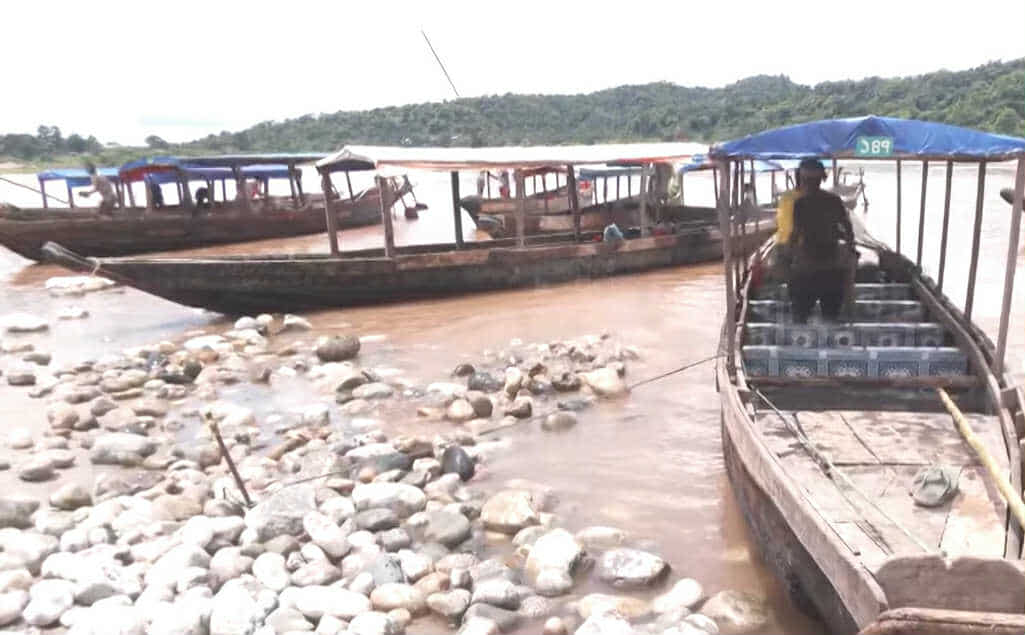
Sylhet’s White Stone/ How an Industry Was Killed, India Profited, Bangladesh Paid the Price

Manzur Ehsan Choudhury, Journalist, Columnist
The quarries of Sylhet once roared with life. In Bholaganj, Jaflong, Companiganj, and Kanaighat, the steady grind of crushers and the shouts of workers defined the landscape, as tens of thousands relied on the river-carried white stones to feed their families. Today, those sites stand abandoned, stripped of their workers and left to rust, a chilling reminder of how quickly an industry — and livelihoods — can collapse.
In 2016, the government shut down stone extraction in the name of “environmental protection.” But nine years on, critics say the move did not protect nature at all. Instead, it created a cascade of economic, geopolitical and environmental consequences that Sylhet’s people are still paying for — while India reaps the rewards.
FROM EXPORTER TO IMPORTER/
Until the mid-2010s, Sylhet’s stone quarries supplied Bangladesh’s cities and powered exports to India’s northeast. Each year, 30 to 35 million tons of stone were lifted from the riverbeds, sustaining industries like the Chhatak Cement Factory and employing some 200,000 people.
Exports streamed across Tamabil to Meghalaya, Assam and Tripura, turning Sylhet’s quarries into one of the country’s most important rural industries. “It wasn’t just stone — it was our economy, our survival,” recalls a local trader.
But with the 2016 ban, everything collapsed. Chhatak Cement became nearly nonfunctional, markets emptied, shops closed, and families were splintered as workers migrated abroad.
India quickly moved to fill the gap. Authorities in Meghalaya and Assam expanded quarrying overnight. The very same stone that once rolled into Bangladesh is now extracted inside India and sold back across the border. Bangladesh, once an exporter, is now spending $500 to $700 million a year importing crushed stone from India.
“It’s absurd,” says one researcher. “India used to pay Bangladesh for stone; today, Bangladesh pays India for the same resource.”
THE FLOOD CONNECTION/
Authorities had argued the 2016 closure was essential to stop environmental collapse. But if the goal was to save nature, the results are grimly ironic.
In 2022, Sylhet endured its worst floods in living memory after receiving 1,452 millimeters of rainfall in June. Two years later, the record was smashed with 2,155 millimeters. The deluge from Meghalaya’s hills surged into rivers like the Dawki, Sari and Piyain — but with no quarrying to clear sediment and deepen channels, the rivers had lost their ability to drain away torrents.
“By blocking extraction, we blocked the rivers themselves,” said one local environmental analyst. Instead of easing ecological pressure, Sylhet was left exposed to catastrophic flooding. Tens of thousands of homes went under water; businesses were wiped out.
A REGION DRAINS, A NEIGHBOR GAINS/
The fallout has reshaped Sylhet’s social landscape. Workers speak of ruined lives. “I earned Tk 500 a day at the quarry,” recalls a former worker. “After the shutdown, I couldn’t even feed my children. Many of us had to leave.”
Small traders echo the same. “We used to sell stone to India. Now, we import their crushed stone at three times the cost.”
Meanwhile, in the glitter of Sylhet’s white stones, tourists pose for photos — a scenic reminder of what locals have lost. But behind the sparkle lies a bitter irony: a resource once free and abundant is now imported at serious cost, while the people who once lived off it are forgotten.
A POLICY REVERSED?/
Experts say Bangladesh still has options. Controlled, environmentally safe quarrying can be revived. Sylhet’s rivers can be restored to navigability. Chhatak Cement can be rescued, and an export industry rebuilt.
But this would require a political shift — away from short-term optics and toward long-term strategy. “If done right, the stones can again fuel growth,” argues a local economist. “If ignored, Sylhet will keep drowning while India keeps profiting.”
THE LESSON/
Sylhet’s white stones were more than a natural spectacle — they were economic lifelines. Once marketed as a symbol of protection, the quarry ban instead destroyed jobs, crippled trade, weakened Bangladesh’s resilience to floods and handed a billion-dollar market to India.
The dazzling white stones of Bholaganj once promised prosperity. Today, they stand as monuments to mismanaged policy, regional imbalance, and the heavy price of decisions made in the name of “environmental protection.”
Writer: Manzur Ehsan Choudhury is a Journalist, Columnist/
Editor & Publisher: Dr. Amanur Aman, M. Phil (IUK), PhD (NBU-Darjeeling)
Advisor Editor: Ajoy Maitra
Managing Editor: Shanaz Aman, Executive Editor; Mythos Aman
News & Commercial Offices: T&T Road, Thana Traffic More, Kushtia-7000.
Mobile: 01713914570, E-mail: editor@thekushtiatimes.com
All rights reserved © 2022 thekushtiatimes.com